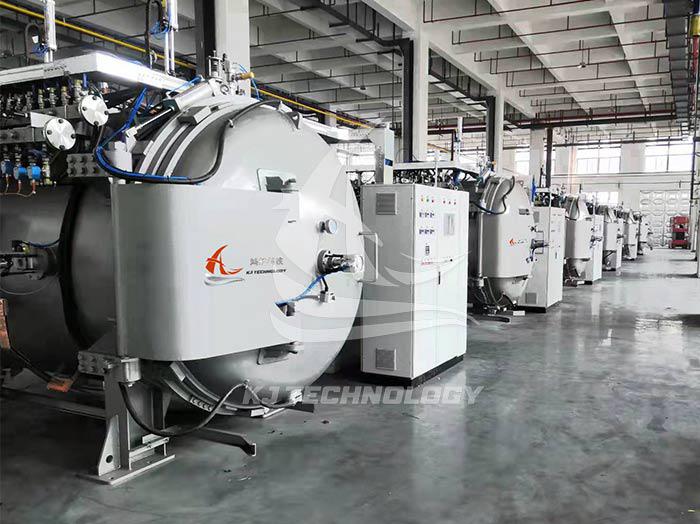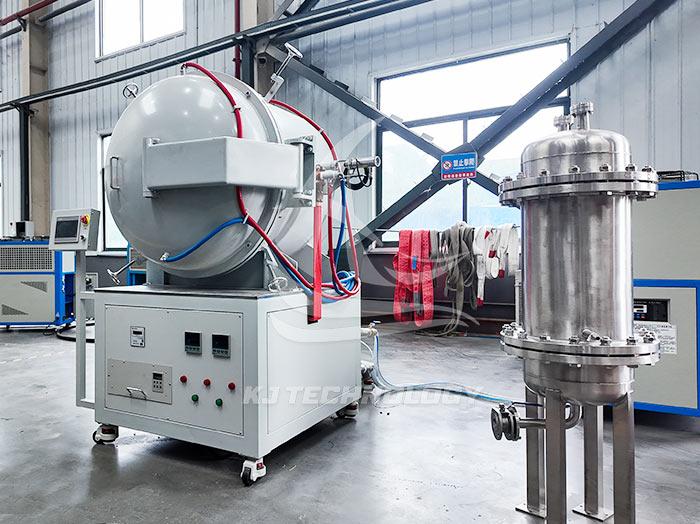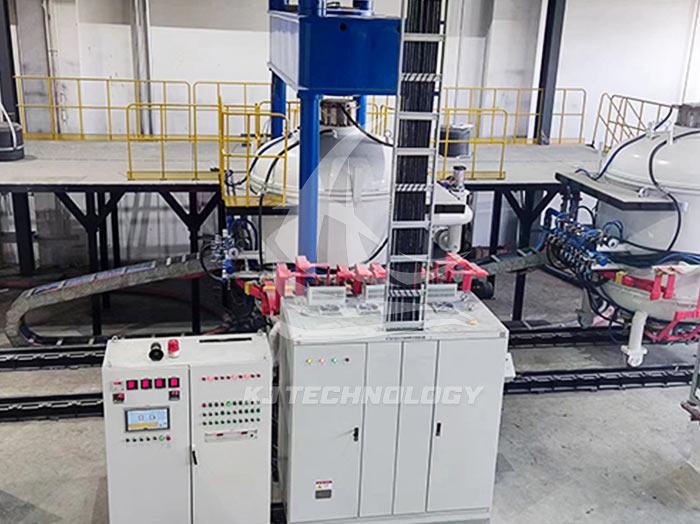Can a box type vacuum muffle furnace be used in a laboratory?
 05-13-2025 Author: KJ technology
05-13-2025 Author: KJ technology
The box type vacuum muffle furnace can be fully used in laboratories and has irreplaceable advantages in material research, heat treatment process development, and precision analysis.
1. The core requirement of the laboratory for the box type vacuum muffle furnace
Small batch, high-precision experiments
Laboratories typically need to process small amounts of samples (ranging from grams to kilograms) and require strict control of temperature, atmosphere, and process parameters to verify material properties or optimize process conditions.
Advantages: The box type vacuum muffle furnace is equipped with a high-precision temperature control system (± 1-3 ℃) and vacuum degree adjustment function (10 ⁻¹ to 10 ⁻⁶ Pa), which can meet the stringent requirements of the laboratory for process stability.
Diversified material processing capability
The laboratory needs to handle various materials such as metals, ceramics, semiconductors, etc., involving processes such as annealing, sintering, degassing, and reduction.
Advantages: The vacuum environment can avoid material oxidation and pollution, and support the experimental needs of active metals (such as lithium and magnesium), high-purity materials, and volatile elements.
Data traceability and repeatability
The laboratory needs to record process parameters and ensure the reproducibility of experiments to support paper publication or patent applications.
Advantages: The box type vacuum muffle furnace is equipped with data recording and export functions, which can store parameters such as temperature, vacuum degree, and time, ensuring the integrity and traceability of experimental data.
2. Typical application scenarios in the laboratory
Material synthesis and modification
Case 1: Preparation of Positive Electrode Materials for Lithium ion Batteries
Requirement: Pre sintering NCM (nickel cobalt manganese) ternary materials under vacuum or inert atmosphere to avoid lithium volatilization.
Equipment configuration: 1200 ℃ vacuum muffle furnace, maximum vacuum ≤ 10 ⁻ ³ Pa, argon gas protection function.
Effect: The charging and discharging efficiency of the material is improved by 5% in the first week, and the cycling stability is enhanced.
Case 2: Activation of Metal Organic Framework Materials (MOFs)
Requirement: High temperature removal of solvent molecules in MOF pores under vacuum to increase specific surface area.
Equipment configuration: 500 ℃ vacuum muffle furnace with dynamic vacuum degree adjustment function.
Effect: The specific surface area of MOF increased from 800 m ²/g to 1500 m ²/g.
Development of Heat Treatment Process
Case 3: Optimization of Shape Memory Effect in Titanium Alloy
Requirement: Study the effect of different vacuum annealing temperatures on the phase transition temperature of titanium alloys.
Equipment configuration: 800 ℃ vacuum muffle furnace, programmed heating function (1 ℃/min).
Result: The optimal annealing temperature was determined to be 650 ℃, and the fluctuation range of phase transition temperature was reduced to ± 2 ℃.
Case 4: Pre treatment of hard alloy tool coating
Requirement: Degassing the tool substrate under vacuum to enhance coating adhesion.
Equipment configuration: 1500 ℃ vacuum muffle furnace, vacuum degree ≤ 10 ⁻⁴ Pa.
Effect: The coating bonding strength is increased by 30%, and the tool life is extended by 2 times.
Precision analysis and testing
Case 5: Sample Preparation for Thermogravimetric Analysis (TGA)
Requirement: Degassing polymer materials under vacuum to avoid interference from gas release during testing.
Equipment configuration: 300 ℃ vacuum muffle furnace, vacuum degree ≤ 10 ⁻ ² Pa.
Effect: The baseline drift of the quality loss curve in TGA testing is reduced by 80%.
Case 6: Surface Cleaning of X-ray Diffraction (XRD) Samples
Requirement: Remove the surface oxide layer of the metal sample to enhance the diffraction peak intensity.
Equipment configuration: 600 ℃ vacuum muffle furnace with rapid cooling function.
Effect: Diffraction peak intensity increased by 40% and background noise reduced.
3. Key characteristics of laboratory box type vacuum muffle furnace
Compact design and high flexibility
The laboratory space is limited, and the equipment needs to have the characteristics of small volume and easy handling.
Example: A laboratory grade vacuum muffle furnace from a certain brand, with dimensions of only 400 × 500 × 600 mm, supports desktop or floor installation.
Rapid temperature rise and fall and program control
The laboratory requires frequent switching of process conditions and equipment with fast response capabilities.
Technical parameters: The heating rate can reach 20 ℃/min, the cooling rate is 10 ℃/min, and it supports 10 stage program temperature control.
Safety and usability
Laboratory operations should avoid risks such as high temperature burns and vacuum leaks.
Safety design: double-layer insulation structure, over temperature protection, automatic vacuum alarm, emergency pressure relief valve and other functions.
4. Summary
Direct conclusion: The box type vacuum muffle furnace is a core equipment for laboratory material research, heat treatment process development, and precision analysis. Its high precision, flexibility, and safety fully meet the needs of the laboratory.
Core values:
Improve experimental efficiency: rapid temperature rise and fall and program temperature control function shorten the process cycle;
Ensuring data reliability: Vacuum environment avoids impurity interference and improves testing accuracy;
Support innovative research: meet the development needs of new materials and processes.
Suggestion: Laboratories should choose appropriate models based on specific research directions (such as energy materials, aerospace, biomedical), and prioritize equipment with in-situ monitoring, atmosphere control, and other functions.








